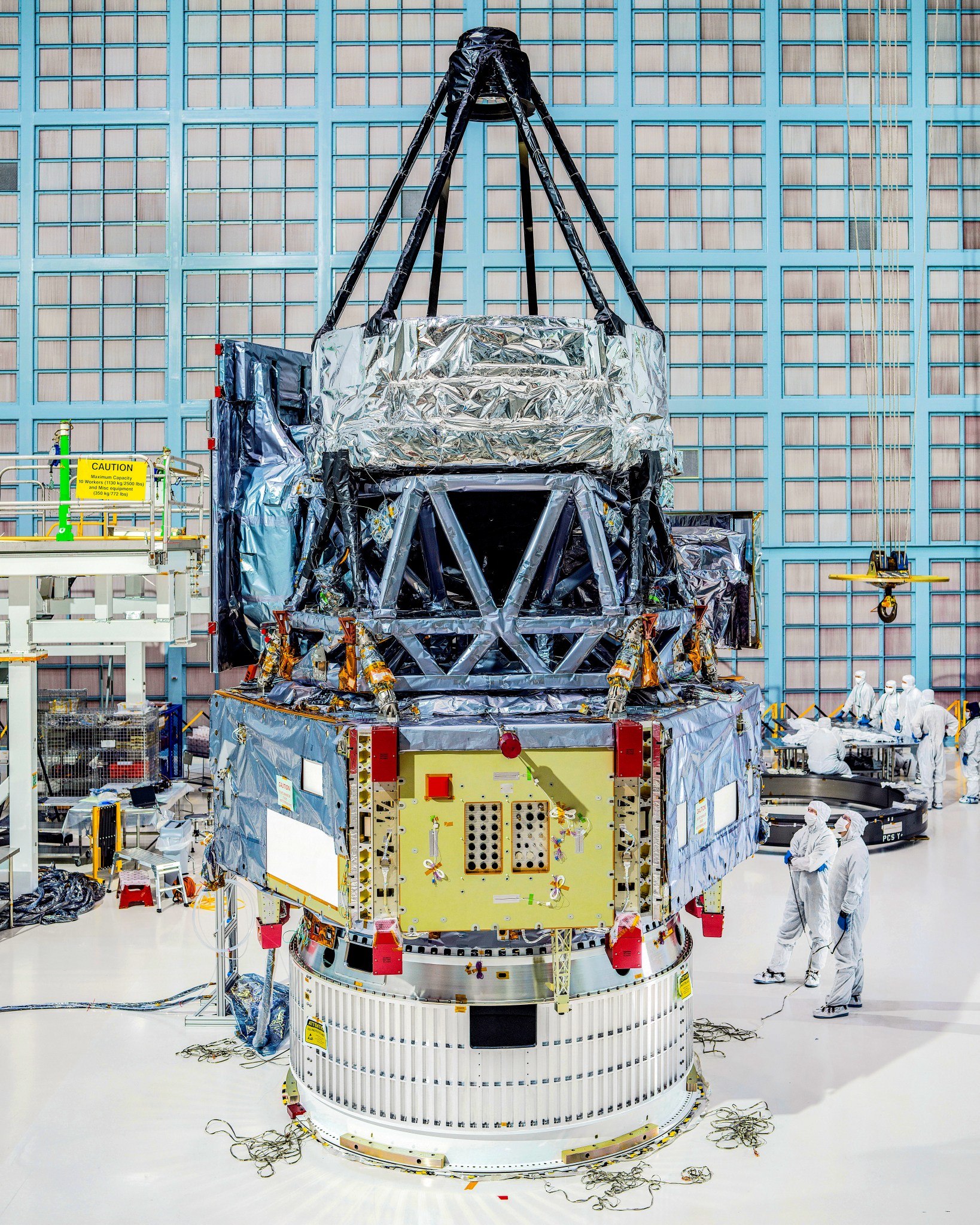NASA Joins Telescope, Instruments to Roman Spacecraft

Technicians have successfully integrated NASA’s Nancy Grace Roman Space Telescope’s payload – the telescope, instrument carrier, and two instruments – to the spacecraft that will deliver the observatory to its place in space and enable it to function while there.
“With this incredible milestone, Roman remains on track for launch, and we’re a big step closer to unveiling the cosmos as never before,” said Mark Clampin, acting deputy associate administrator for the Science Mission Directorate at NASA Headquarters in Washington. “It’s been fantastic to watch the team’s progress throughout the integration phase. I look forward to Roman’s transformative observations.”

Technicians recently integrated the payload – telescope, instrument carrier, and two instruments – for NASA’s Nancy Grace Roman Space Telescope in the big clean room at the agency’s Goddard Space Flight Center in Greenbelt, Md.
NASA/Chris Gunn
The newly joined space hardware will now undergo extensive testing. The first test will ensure each major element operates as designed when integrated with the rest of the observatory and establish the hardware’s combined performance. Then environmental tests will subject the payload to the electromagnetic, vibration, and thermal vacuum environments it will experience during launch and on-orbit operations. These tests will ensure the hardware and the launch vehicle will not interfere with each other when operating, verify the communications antennas won’t create electromagnetic interference with other observatory hardware, shake the assembly to make sure it will survive extreme vibration during launch, assess its performance across its expected range of operating temperatures, and make sure the instruments and mirrors are properly optically aligned.
Meanwhile, Roman’s deployable aperture cover will be integrated with the outer barrel assembly, and then the solar panels will be added before spring. Then the structure will be joined to the payload and spacecraft this fall.
The Roman mission remains on track for completion by fall 2026 and launch no later than May 2027.
Virtually tour an interactive version of the telescope
By Ashley Balzer
NASA’s Goddard Space Flight Center, Greenbelt, Md.





